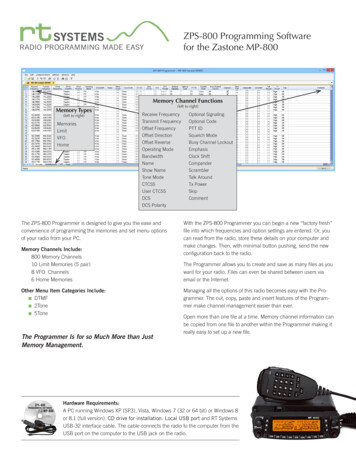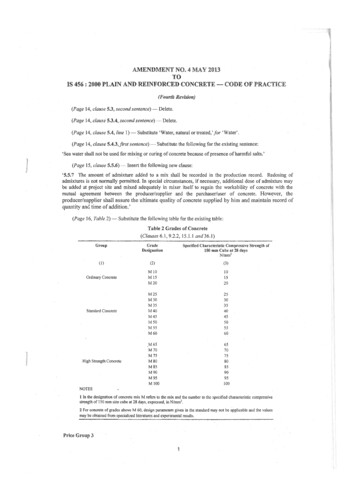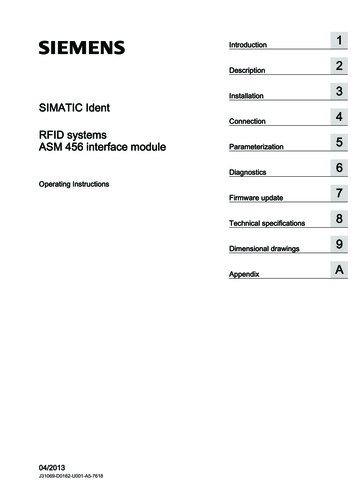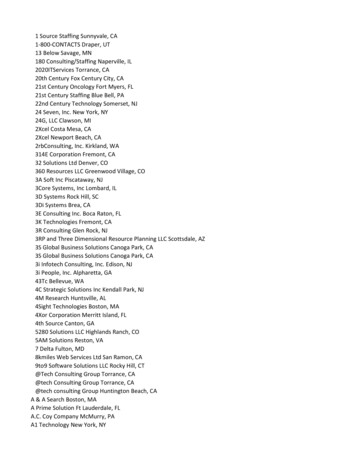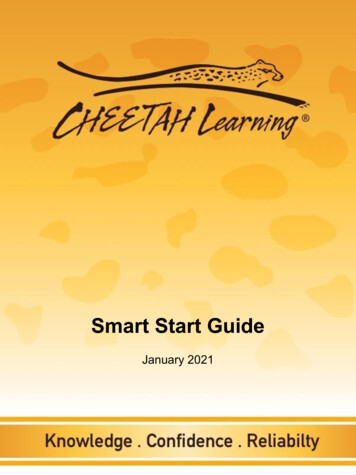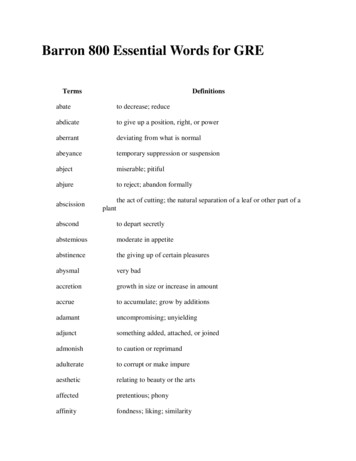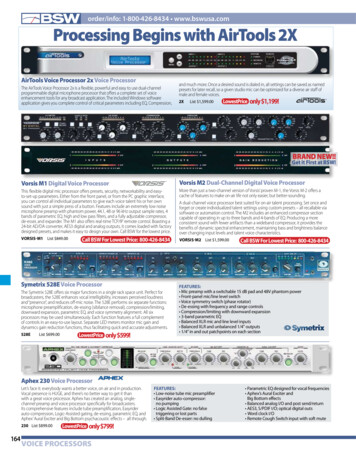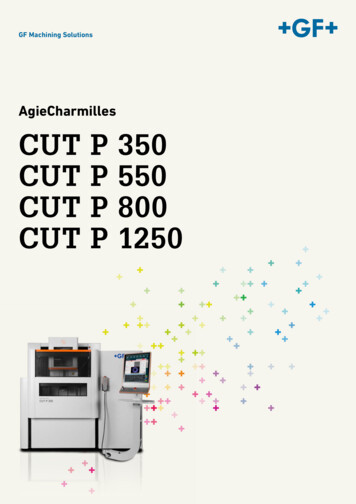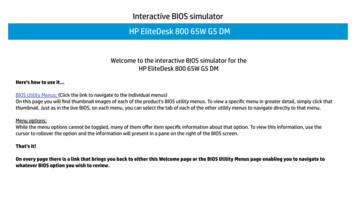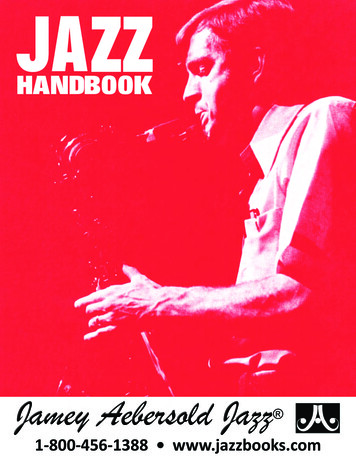
Transcription
1-800-456-1388 www.jazzbooks.com
Cover Photo is Jamey AebersoldCONTENTSGENERAL INFORMATION.2Valuable Jazz Information.3SOLOING by Jamey Aebersold.4Jazz: The Natural Music.5Suggested Listening–Jazz Artists.7Historically Significant Recordings.8Tips For Learning A New Tune.9Practice Procedures For Memorizing Scalesand Chords To Any Song.9Practice Procedures–Musical Examples.10SONG LIST for Beginners.11SCALES.12Introduction to the SCALE SYLLABUS.13SCALE SYLLABUS.14NOMENCLATURE.15The Dominant 7th Tree of Scale Choices.16Ten Basic Exercises–TREBLE CLEF.17Ten Basic Exercises–BASS CLEF.18TREBLE CLEF SCALES.19BASS CLEF SCALES.20Ear Training.21Interval Chart.22Basic Keyboard and the Chromatic Scale.23The Circle of Cycle of Fourths.24Scales/Modes Based on the Major Scale.24HOW TO PRACTICE by Jerry Coker.25HOW TO PRACTICE by David Liebman.25Things That Create Interest When Soloing.26Starting A Phrase or Melody.26Jazz ARTICULATIONS.27Jazz RHYTHMS.29The BLUES SCALE and Its Use.30F Blues & Bb Blues Progressions:For TREBLE CLEF C Instruments.31For Bb Instruments.31For Eb Instruments.32For BASS CLEF C Instruments.32PLAYING THE BLUES.33What Does “To Hear” Really Mean?.34VARIATIONS ON BLUES.35Values–Plato Quote–Bill Evans Quote.36Bebop Characteristics by David Baker.37Short List of Bebop Players.38BEBOP SCALES.38Transposition Chart.39Two Interesting Short Stories.39Jamey’s JAZZ THEORY ASSIGNMENTS.41II/V7/I Progression With Emphasis On The7th Resolving To The 3rd.46PIANO VOICINGS:Blues Voicings.47Major and Dominant 7th Voicings.48II/V7/I Voicings.49Jamey’s POINTS TO REMEMBER.52This booklet is provided FREE OF CHARGE by Jamey Aebersold Jazz.If you would like a complete catalog of the thousands of jazz educational materials available,please call 1-800-456-1388 or visit www.jazzbooks.comSUMMER JAZZ WORKSHOPSFor information concerning the finest in jazz education write to SUMMER JAZZ WORKSHOPS, c/o the addressbelow. Our week-long Workshops (and the 2-day “Anyone Can Improvise!” Seminars) are held in locationsall over the United States and are open to people of all ages, all abilities and all instruments. You will not finda better program anywhere in the world!Call 1-800-456-1388, or visit our website for the most up-to-date info: www.summerjazzworkshops.comPublished byJAMEY AEBERSOLD JAZZP.O. Box 1244New Albany, IN 47151-1244www.jazzbooks.comCopyright 2000, 2010 by Jamey Aebersold Jazz . All Rights Reserved. Printed in U.S.A.International Copyright secured. All copyrights used by permissionNo portion of this book may be reproduced in any way w/o express written permission.1
GENERAL INFORMATIONThis booklet is designed to give you the basics which you will need in order to learn the art of improvising inmusic. Many feel that people who improvise or play jazz are special. If they are special, it is because they havespent their time wisely learning the tools of the trade. A few of the tools are: scales, chords, patterns, licks, songs(standards and originals), training the ear, listening to records of jazz greats and any other thing which they feelwill contribute to the growth of a well-rounded musician.I feel it is good to establish a practice routine, especially for those of you who are new to learning the languageof jazz. To play jazz requires discipline, and discipline is good for all of us.The language of jazz or the jazz idiom is in a constant state of flux. In order to be a part of the jazz movementone must accept change. Jazz has changed greatly over the past 70 years and is presently in transition. Eachgeneration of jazz musicians contribute their own unique ideas, feelings, and sound to the music and this is whatcreates the change. If you equip yourself well, you may be one of those people who influence others and set newtrends in jazz.If you want to get it all together, I suggest reading each of the pages in this booklet very carefully. Mark with penor pencil points that you feel are important so when you flip through the pages In the future your eye will catchthem. Listen, listen, listen carefully to anyone playing jazz or improvising. You can learn much from live performances as well as records. Start a record collection and listen to what has been recorded over the past 85years. You are in for a treat!Spend your practice time wisely. Don’t play things over and over that you can already play. This is great for theego but does little to advance your musical progress. Be patient with yourself. Don’t expect everything to comeat one setting. They say that things come to us when we are ready to accept them. A healthy mental state is alsoresponsible for progress when practicing.Gradually train your ears to really HEAR music and all of the components that make the final product. Read thepages on Ear Training carefully and institute a daily routine to improve your perception. There are also otherpages that help spell out an excellent practice routine.Since most of us do not have a good rhythm section at our disposal, I recommend practicing and soloing with theplay-a-long records. Each volume contains a book and one or two CDs. Many professionals use these recordingsto warm-up, keep in shape, practice new patterns or licks, or to learn new songs and improvise on the chord/scale progressions.During the past 43 years, many private teachers as well as high school and college teachers have made therecordings part of their daily or weekly teaching assignments. It is good to begin playing with a rhythm section assoon as possible and the better they are the more you can benefit from the experience. I personally still practicewith my Play-A-Longs in order to continue to progress musically.Playing jazz teaches self-esteem and independence.I highly recommend our Summer Jazz Workshops which are offered in the U.S. each summer. Some of thefinest performers and teachers of jazz appear at these workshops. Write to: Summer Jazz Workshops, P.O. Box1244, New Albany, IN 47151-1244, or visit www.summerjazzworkshops.com for more information.Lastly, play on the best instrument that you can afford and study with the finest teachers available.May your journey in music, and jazz in particular, be as enjoyable as it has been for me in putting this booklettogether for you.2- Jamey Aebersold
VALUABLE JAZZ INFORMATIONThe basic ingredients in music are SCALES, CHORDS, MELODY, RHYTHM, and HARMONY. Jazz education’s purpose is to give you thebasics you need in learning to play jazz or to improvise. The jazz musician is an instant composer! The melodies which come from theirinstruments are conceived in their mind just before they play them. The difference between the improviser and the traditional composer isthis: that the “jazzer” has no eraser to instantly correct mistakes. They practice long and hard trying to make their physical body and theirmental frame of mind an appropriate vehicle to execute the ideas formulated in their mind.The GOAL of every jazz musician is to play on their instrument (or vocally sing) what is heard in their mind. Practicing scales, chords(arpeggios), exercises in all keys will help gain facility which will help unlock the ideas that are now being held prisoner in your mind. Assoon as possible, try playing what you HEAR mentally in your head! In other words, sing a short melody mentally, or sing with your mouth,and then play those exact pitches and rhythms on your instrument. This is the same procedure the jazz player uses when improvising.To play requires discipline. It is good to establish a practice routine. Improvisation should be a part of your daily practice. Play whateveryou hear in your head. It could be something from TV, radio, or just some melodies that you hum to yourself. This is also a form of EARTRAINING. You are training your inner ear to direct your fingers to the notes it hears, instantly. Gradually train your ears to really HEARmusic and all of the components that make the final product. Listen carefully to anyone playing jazz or improvising. You can learn muchfrom live performances as well as recordings. Start a collection and listen to what has been recorded over the past 80 years.The old myth that says, “You either have it or you don’t,” is strictly a myth founded on ignorance and the inability (or unwillingness) of thosewho can play to share what they do verbally with those who think they can’t learn.The mind is the originator of ALL musical thoughts. The mouth (singing) usually can approximate the pitches, rhythms, and nuances ofwhat the mind hears better than actual instruments (sax, trumpet, etc.) can do. Since the instrument we have chosen is a learned device,it is the least able to reproduce the musical thoughts of our mind. It stands to reason that the person who is better equipped technicallywill come closer to playing on their instrument the thoughts of their mind.One of the reasons the jazz greats sound different than you is the fact they have so many sounds (scales, chords, patterns, ideas) attheir disposal. The SCALE SYLLABUS can help you uncover new sounds. Practicing, using the exercises found in this booklet or in Vol.1 “How To Play Jazz And Improvise” will give you a good foundation to play ANY style of music.“JAZZ IS FREEDOM!” Thelonious Monk said this. Too often we refuse to take advantage of an opportunity which will allow us a measureof growth and freedom in our musical expression. Listening to jazz greats is inspirational and rewarding. Keep this in mind: practicingexercises, patterns, licks, scales, and chords should lead to more expressive creativity, not boredom.HOW DO YOU BEGIN IMPROVISING? Many people begin by playing by ear (letting their inner musical ear guide their choice of notesand rhythms). This is a hit-or-miss process that most jazz players (before 1965) had to use to learn their trade. However, this methodstrengthens the player’s ear and is extremely valuable. Everyone should spend time each day playing by ear. The sooner you train yourears to discern, the sooner they can HELP YOU in making music. By using your ear, and knowledge of the needed scales and chords,you will feel much more comfortable with beginning improvisation.IMPORTANT: Don’t get hung up practicing exercises and more exercises without ever attempting to improvise. Avoid becoming a personwho plays great exercises, but delays using their creative energy until tomorrow. DO IT NOW! IMPROVISE. Even if you only use a few notesof the scale, begin there. START! Don’t put it off until tomorrow or until you have the scale under better control. DO IT NOW! The longestjourney begins with a single step. Today is the first day of the rest of your life. The longest musical phrase begins with a single note.Just because you practice scales, chords, patterns, and exercises doesn’t mean you will sound stiff and mechanical, OR that you willbecome a jazz great! But it’s a means to an end. More than any other ingredient, the JAZZ TRADITION is based on LISTENING. Listening to jazz records/tapes should be part of every musicians daily routine. Not only is it fun to listen to, but you can absorb many musicalideas and incorporate them into your own solos. Recorded music contains most answers you seek.Having “good ears” means having the ability to hear the roots to the various chords or scales that are being played; having the ability tohear the quality of the chord or scale--major, minor (what kind of minor?), pentatonic, dim.whole tone, etc.); it means having the ability totell what tone of the scale or chord is being played at any point in the solo--”ah, that note was a #4 resolving to the 6th and then resolvingto the 5th!”; it means hearing the piano, bass, soloist, drums, etc. individually as well as collectively.There are many levels of hearing. Some people hear. Other people can really HEAR! And some can seem to hear and identify almost anything that is being played. They can seem to sing or play back portions of solos right after the performer has played. How can they HEAR,and we can’t seem to find the roots, scale, qualities, or what time signature the piece is in? They have worked hard at identifying all thevarious sounds they hear daily. Since they want to improvise, they take the time to apply on their instrument the things they are hearing.They also use their mind and their free time to figure out things h
- Jamey Aebersold 2. The basic ingredients in music are SCALES, CHORDS, MELODY, RHYTHM, and HARMONY. Jazz education’s purpose is to give you the basics you need in learning to play jazz or to improvise. The jazz musician is an instant composer! The melodies which come from their instruments are conceived in their mind just before they play them. The difference between the improviser and the .
